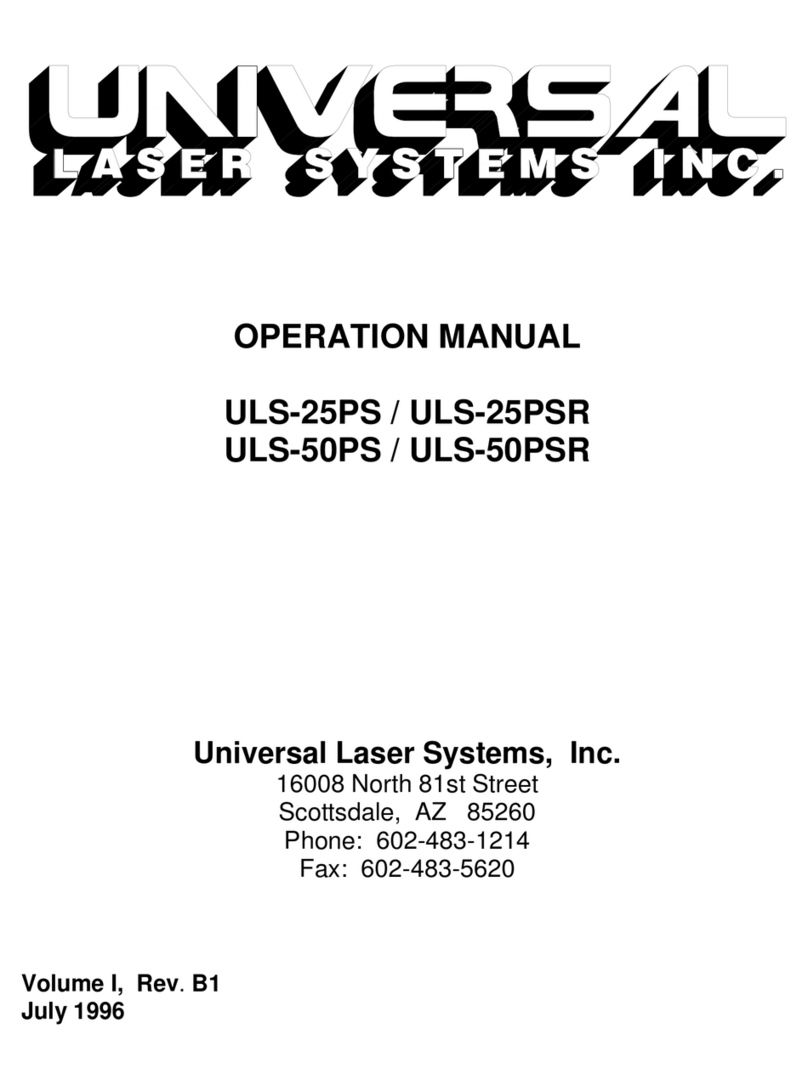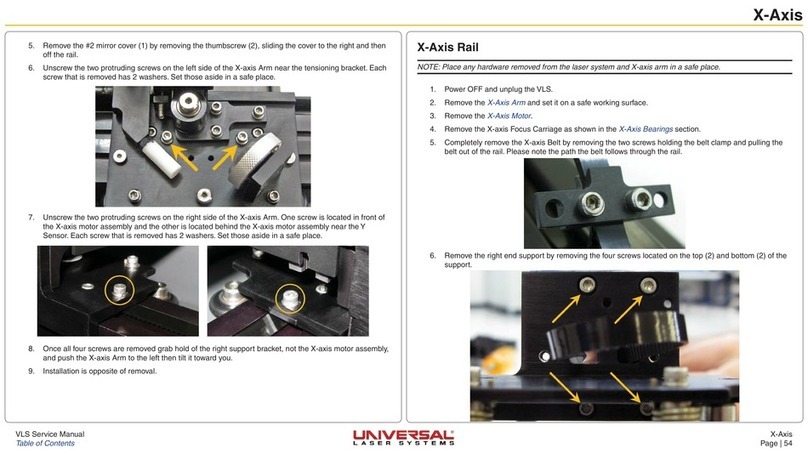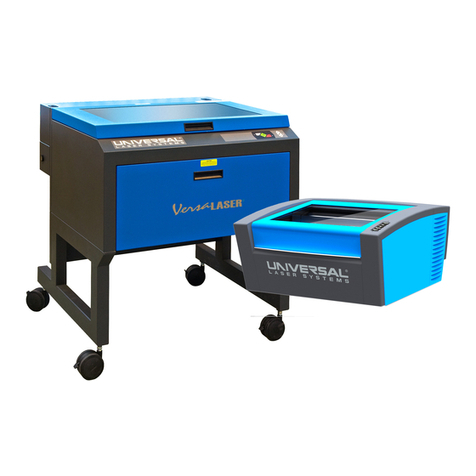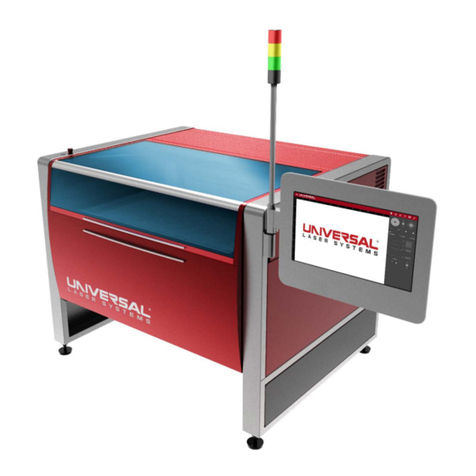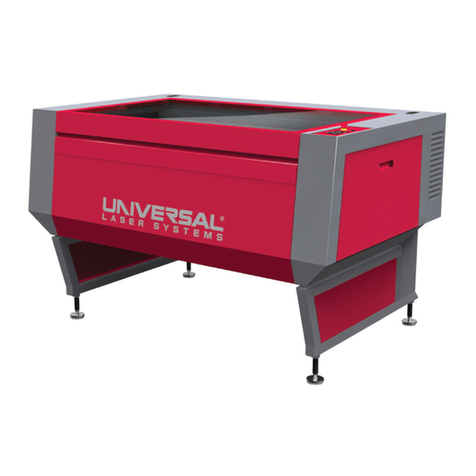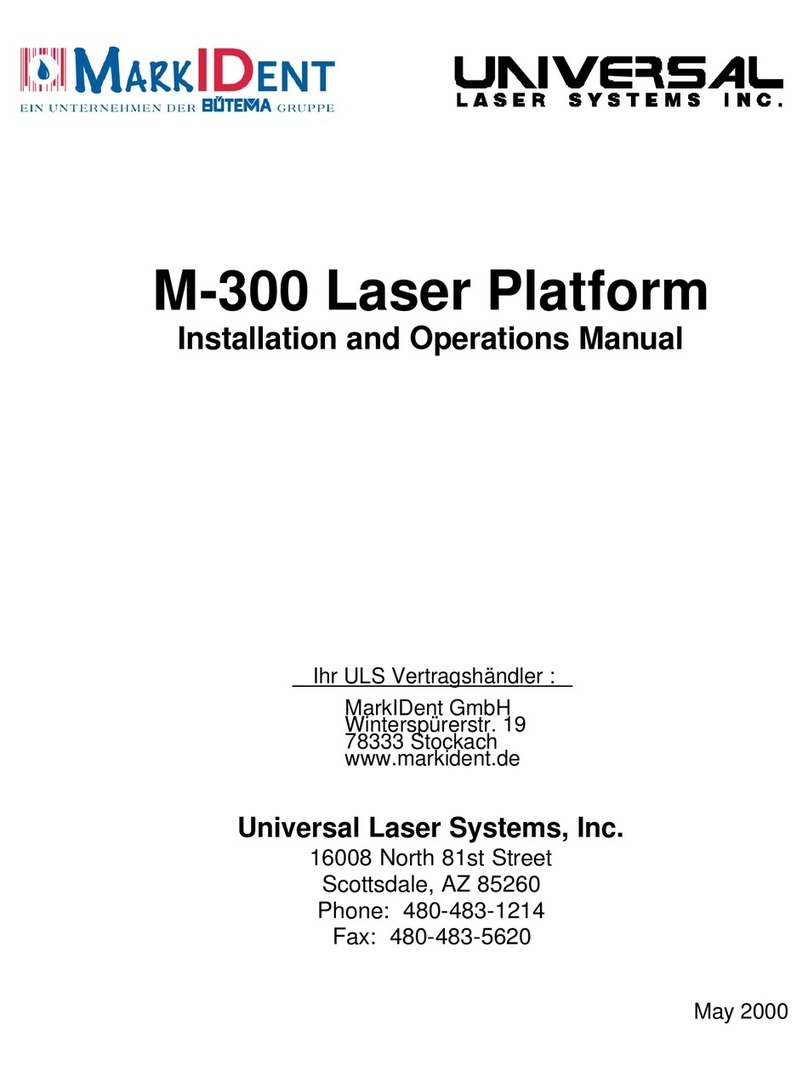
2
Notice
This publication and its contents are proprietary to Universal Laser Systems, Inc. (ULS), and
are intended solely for the contractual use of ULS, Inc. customers.
While reasonable efforts have been made to assure the accuracy of this manual, ULS shall
not be liable for errors contained herein or for incidental or consequential damage in
connection with the furnishing, performance, or use of this material.
ULS reserves the right to revise this manual and make changes from time to time without
obligation by ULS to notify any person of such revision or changes.
ULS does not assume any liability arising out of the application or use of any products,
circuits, or software described herein. Neither does it convey a license under its patent rights
nor the patent rights of others.
This publication and its contents may not be reproduced, copied, transmitted, or distributed in
any form, or by any means, radio, electronic, mechanical, photocopying, scanning, facsimile,
or otherwise, or for any other purpose, without the prior written permission of ULS.
Intended use of this product must be followed within the guidelines of this manual. In no
event will ULS be liable for any damages caused, in whole or in part, by customer, or for any
economic loss, physical injury, lost revenue, lost profits, lost savings or other indirect,
incidental, special or consequential damages incurred by any person, even if ULS has been
advised of the possibility of such damages or claims.
WARNING: Universal Laser Systems products are not designed, tested, intended or
authorized for use in any medical applications, surgical applications, medical device
manufacturing, or any similar procedure or process requiring approval, testing, or
certification by the United States Food and Drug Administration or other similar
governmental entities.
The product described herein is covered under one or more of U.S. Patents 5,661,746;
5,754,575; 5,867,517; 5,881,087; 5,894,493; 5,901,167; 5,982,803; 6,181,719; 6,983,001;
7,415,051; 7,469,000; 7,715,454; 8,599,898.
© Universal Laser Systems Inc., 2016
All Rights Reserved
